Feb 20, 2018 | advice, auction, coins, education
There are many ways to collect numismatics and there are many places that a collector can find items to add to a collection.
 Collecting can be an expensive hobby regardless of what is collected. Whether it is numismatics or comic books, one piece is never enough and there is always a desire to collect an entire set regardless of the parts that make up the set.
Collecting can be an expensive hobby regardless of what is collected. Whether it is numismatics or comic books, one piece is never enough and there is always a desire to collect an entire set regardless of the parts that make up the set.
When collecting numismatics, we know about the coin dealer, coin shows, and online auctions from the major auction houses and eBay. But did you know there were other online auctions that you can tap into to find collectibles with better prices?
There is an entire community of resellers working with estates, relocations, downsizing, and liquidation that offers a way to find bargains.
Estates are an easy concept to understand. Someone dies and the family, executor, or personal representative of the estate has the responsibility to clean out the home, apartment, or condominium of the decedent so that everyone else can move on. Regardless of how gentle we try to be, everyone dies and something has to be done with the stuff left behind.
This is where estate sale companies are a help. These companies are contracted to whoever is trying to sell off the estate and hold a sale of the goods. Some estate sales are held over one or two weekends. Buyers go to the house to see what is for sale and buy what they want.
Over the last few years, there has been a growing number of online estate auctions. Rather than holding a sale, the items are either staged in the home or in a warehouse and people bid online. Estate auctions have been extended to relocations, downsizing, and liquidation of seized properties and even commercial assets.
Online estate auctions work like any other online auction. You bid for the item you want and hope you win. When the auction is over, you pay for the item plus a buyer’s premium, similar to what you would pay if you were buying from an auction house. In most cases, the buyer’s premium ranges from 10-15 percent of the selling (hammer) price. In most cases, local sales tax is charged.
Although you can find bargains at these auctions, it is not always an easy process.
First, not every company works the same. Unlike eBay where there are consistent rules sellers have to abide by, estate auction terms and conditions can be very different than what you are used to. Before you bid, read the terms and conditions. If you cannot abide by them, do not agree to bid on the auction.
How do you agree to the terms and condition? Register on the auction site and click the button for that auction. Registration requires you to identify yourself including entering a valid credit card. When you agree to the terms and conditions of the auction, most companies will put a hold on your credit card for a set value to determine that the credit card is valid. These holds can range from $1-100. Remember this if you use a debit card. In most cases, your credit card will be charged for the purchases immediately up the close of the auction.
The auction platforms may be very different than what you are used to. These auction platforms take their cues from services offered by major auction houses and not eBay. Their catalog is a list of lots for sale that includes pictures an additional information. Not every item includes good pictures or descriptions and not every auction service uses their software to its best capabilities.
Some companies offer a live preview. If the auction is being staged onsite, then you can go to that site during the designated time and examine the items up for bid. Auctions held from warehouses usually hold multi-day previews. If you cannot attend a preview or if there is no preview offered, you have to rely on the pictures. If the picture does not give you the confidence you need to bid, pass on that item.
These auctions allow you to enter a maximum bid and will raise your bid price until someone outbids your maximum, similar to what you may be used to on eBay. One big difference is that most of these auctions use a soft close system. A soft close happens when a bid is received at the last minute of the auction. When a bid is received the end of the auction is extended. Most auctions will extend the end time 3-5 minutes to prevent sniping.
Most of these estate and liquidation auction services set their lots up with a low starting price. Usually, the opening price is $1.00 and sell with no reserve. Some have other practices that they use to protect the seller of higher-priced items. But this scenario can be a recipe for finding bargains. In one auction, I was able to purchase three Carson City Morgan Dollars in GSA holders for about 75-percent of than their Greysheet value even after sales taxes and buyer’s fee were added. I was then able to sell the coins to a client who paid their Greysheet value giving me a nice profit for the day.
Another issue you will have to work around is that many of these auctions do not provide shipping. If you read their terms it will say that if you win you will have to pick up your items at a specific place during the designated pickup time. If you want your items shipped you will have to work with a third-party shipping service such as the local Parcels Plus or UPS Store.
There have been mixed reports using third-party shipping services. Some are very good, contientious, and will take care of you but at a cost. There are others that are not very good and have been known not to pack the items well and pilfer from your winnings. There is no way to know the rating of the auction service’s recommended shipper. You may want to try to find online reviews of that shipper.
A few of these estate auction companies will provide shipping services. If you require shipping, you may have to do this as part of the registration or contact the company immediately following the close of the auction. Those companies that provide shipping will charge a service fee in addition to the postage.
Remember, the larger and more expensive the item, the more will be required for it to be shipped.
When purchasing anything from an estate auction, it is important that you read and understand their terms and conditions before you bid and buy. Each service has different terms and conditions that could turn your purchase into a nightmare. If you are careful, you can find bargains.
Where can you find these bargains?
This is where I give up the secrets that have allowed me to build a collectibles business. I have used these resources to travel the region to find cool items that have made a lot of people smile.
My first go-to resource is EstateSales.net. I have found no other resource with the most complete listing of every estate sale and auctions for whatever region of the country I am located. It is a free service for buyers. Either select your state or enter your zip code to find all of the sales in your area. Even if you are visiting your relatives out of town, enter their zip code and see if you can find some bargains.
Listings on EstateSales.net include the address and hours of the sale. If it is an online auction, it will provide a link to the auction site. Each sale page can include photos of the items for sale. While photos are not required, most listings include them. You can get a preview of the items for sale to help you decide whether it is worth the trip or the effort to bid.
They also have a mailing list you can sign up for that will send you sales in your selected region.
Using the listing on EstateSales.net, you will learn who some of the local auction companies are. You can either watch for their sales on EstateSales.net or go to their website and sign up for their mailing list. Some of these auction companies continue to have live, in-person auctions and it may be something you will consider attending.
Another place to find estate auctions is on the site that provides the auction services to the various companies. One of the largest services is HiBid.com.
HiBid is a great site for finding a lot of auctions in a lot of places and supports a few different auction formats including online only, live webcast auctions, absentee bidding, or just catalogs for auctions that will be live or even on another platform. They will allow you to search across auction companies and regions.
As I am writing this, there are 1,134 open auctions with 794 being internet online-only. Of those online-only auctions, there are 3,607 lots in the Coins & Paper Money category.
AuctionZip.com is another auction hosting service that is very auction company-centric. While you can search across auctions its model is to try to protect the propriety of the companies that use its site. Once you see the difference in the interface between HiBid.com and AuctionZip.com, you will understand why the former is more popular.
One nice feature about AuctionZip.com is that when you do a search it lets you look at the auctions open for a particular day. If you have time restrictions, it will allow you to better tailor your bidding times. This is good if you are traveling so that you do not have a conflict with the end of the auction.
LiveAuctioneers.com is a similar service but serves a more upscale audience. Their service has stricter requirements as to who can list auctions on their platform. What this does is provide better assurances for the buyer that they are dealing with a more established company. Currently, there are 7,780 items listed for auction in the Coins, Currency & Stamps category.
A feature of LiveAuctioneers.com, aside from its clean interface, is that they have a consignment service that helps connect you with an auctioneer that will help sell your items. If you have something that you want to sell at auction but do not know who to speak with, this is a good service to help get you started.
One of the oldest services is icollector.com. They are a strictly collectible market auction service. Although their catalog is smaller than the others listed, their listings are comparable in the collecting categories. iCollector.com may not be as elegant as other services, but they do have the inventory for you to look at. There are just under 15,000 lots of various numismatics. Their strength is that the numismatic categories are divided by country and type. Where other auctions make have a general category, iCollector.com has categories to allow you to narrow your search down to what your interest.
Last, but definitely not least, is Invaluable. Auction companies that use Invaluable are what could be classified as mid-to-upper range companies. These companies are more concentrated around art and furniture but have added collectibles and other categories likely to facilitate sales from companies that buy higher-end estates in order to keep them as clients. Most of the auctions on Invaluable are absentee bid auctions with some items available for immediate sale. As I write there, there are 20,485 lots available in the Coins, Money & Stamps category. In fact, over the last few weeks, gold and silver bars dominate the listings on the first page of the category.
Invaluable is also a site with a very clean interface that is very welcoming. They also divide their larger sections into individual categories so whether you are interested in US Coins or Ancient Coins, you can browse that section without clutter.
Since I started writing this article, I won several silver Chinese Panda coins from an online estate auction. Most of the coins were purchased at or below the spot price of silver even when adding the buyer’s premium. One of those coins that were purchased a little over the spot price is the very popular 2000 Panda that can sell for a lot of money. There are other coins that I purchased at less than market value.
Even though I am not a fan of third-party grading services, especially for modern coins, I will send these coins to one. Although I think all but one is genuine, and it is possible it was a pocket piece, as long as the 2000 and amake up of the pre-2000 silver Panda coins are genuine, I will more than makeup for the cost of the entire purchase plus the grading fees.
Now go out and find your own bargains!
Feb 18, 2018 | advice, coins, commentary, news

“Clad in 31 milligrams of pure gold,” or $1.34 in gold at the current price of $1,349.10 per troy ounce. (YouTube screen grab)
The elderly woman, like many other elderly who may not have the experience to deal with the sales pitch or understand the nuances of the particular investment, was smooth-talked by one of their salesmen who played on her emotions.
According to the story, the woman has infrequent contact with her children and used to look forward to the sales call from the NCM representative. Like similar scams, the representative likely fed on these emotions to convince her to buy NCM’s overpriced products.
The National Collector’s Mint settled on a fine of $750,000 from the Federal Trade Commission for advertising they were selling “official” 9/11 commemorative coins. The FTC claimed the ads were deception because no such coin was authorized by Congress, the only constitutionally legal entity to grant legal tender status to any coin from the United States. NCM settled without admitting guilt.
With all due respect to the National Collector’s Mint, they have advertised garbage collectibles before. Whether it is the not-so-official 9/11 commemorative coin or the tribute proof plated with gold with less than one-dollar in value, the television commercials that I have seen even on allegedly reputable cable channels is enough to make one gag on their coffee.
If you have elderly relatives living alone, give them a call. First, you will be doing a good thing especially if they are your parents. Even if there have been problems in the past, get over it. Life is way too short to hold a grudge. While talking with them, make sure they are not being taken advantage of by the likes of these scam artists. By talking with them they will not feel lonely and have to seek comfort in the voice of a smooth talker sitting in some cube farm in some sterile office.
Please remind them that if the deal sounds too good to be true, it is not a good deal! This includes the overpriced coins that are sold on the television shopping channels!
And now the news…

February 13, 2018
Our colleague Martin Shaw thinks he may have actually found a fake  → Read more at cornwalllive.com
→ Read more at cornwalllive.com

February 13, 2018
Thursday is the last day that one-cent, ten-cent and 25-cent coins can be used as legal monetary tender in Jamaica.However, the Bank of Jamaica (BOJ) will continue to redeem them indefinitely, during its regular business hours of 9 a.m. to 2 p.m….  → Read more at jamaica-gleaner.com
→ Read more at jamaica-gleaner.com

February 13, 2018
In many quarantines, these coins were the only form of money that patients affected by the disease could access.  → Read more at atlasobscura.com
→ Read more at atlasobscura.com

February 14, 2018
South Africans can expect a new coin and banknote issue with former President Nelson Mandela’s face on it later this year.  → Read more at timeslive.co.za
→ Read more at timeslive.co.za

February 14, 2018
An elderly Houston woman says an on-line coin seller based in New York took advantage of her loneliness to sell her $1.3 million in gold and silver coins at inflated prices. Patricia Thomas, 72, sued the National Collector's Mint in federal court in Houston, alleging that one of its sales representatives, under the guise of "checking in" with Thomas, smooth-talked her into to buying the coins, which cost more than twice what they were worth, according to court documents.  → Read more at chron.com
→ Read more at chron.com

February 15, 2018
To ensure you the best experience, we use cookies on our website for technical, analytical and marketing purposes. By continuing to browse our site, you are agreeing to our use of cookies.  → Read more at antiquestradegazette.com
→ Read more at antiquestradegazette.com

February 15, 2018
MINNEAPOLIS (KMSP) – Timberwolves players, coaches and fans paid tribute to the late Coach Flip Saunders at the Target Center. Saunders was honored as part of “Flip Saunders Night” at Thursday night’s game against the Los Angeles Lakers.  → Read more at fox9.com
→ Read more at fox9.com

February 16, 2018
Blackpool Tower is set to feature on a new silver £5 coin, an announcement by the Queen has revealed. The commemorative cash, which will be released ahead of the iconic structure’s 125th birthday next year, will be part of a series to celebrate British landmarks.  → Read more at blackpoolgazette.co.uk
→ Read more at blackpoolgazette.co.uk
Feb 11, 2018 | advice, coins, news
 The news article that caught my eye this week is a commentary produced on the website for WDEL, a radio station in Wilmington, Delaware about an advertisement that appeared in Wilmington’s News Journal newspaper for the “First-Ever Official Philadelphia Eagles Super Bowl LII Champions Legal Tender Coin.”
The news article that caught my eye this week is a commentary produced on the website for WDEL, a radio station in Wilmington, Delaware about an advertisement that appeared in Wilmington’s News Journal newspaper for the “First-Ever Official Philadelphia Eagles Super Bowl LII Champions Legal Tender Coin.”
An online search found the item for sale at the Bradford Exchange.
According to the product page (I am not providing a link since I am not endorsing this product), it is a legal tender coin but does not indicate the country of issue. The “coin” is plated in 24-karat gold and comes in a holder that looks very similar to a popular third-party grading service.
The images provided on the product page are of one side of the coin. There are no images of the reverse of the coin or the holder. Even with the description that does not include the coin’s metal content including the amount of gold it contains and the country that granted legal tender status. They want buyers to shell out $49.95 plus $4.95 for shipping and handling.
This is worse than the Gold Buffalo Tribute Proof from the National Collector’s Mint. If you have the opportunity to watch the business cable channels during the day, they are consistent advertisers. At least with the Gold Buffalo Tribute Proof you will only be ripped-off for $19.95 plus $7 shipping.
Simply, the amount of gold in the plating is so thin that there may be less than $1.00 worth of gold. Even if the base coin is brass or bronze, the amount of copper would make the metal value less than $2.00. Since the Bradford Exchange has indicated it has licensing agreements with the NFL and NFL Players Association, their costs may be higher in order to pay off these concerns.
Even though they are creating only 2,017 of these coins, the resale market is very limited. When you or your heirs try to sell these coins, they will find that if the coin can be resold it will probably bring pennies on the dollar versus the original price.
If you are a Philadelphia Eagles fan and want a numismatic-related souvenir of their win in Super Bowl LII, then it looks like a nice, albeit expensive item. If you are only interested as a speculator, you can find something better to invest in.
And now the news…

February 5, 2018
Bank to act amid concerns over private firms selling medals marking historic events  → Read more at irishtimes.com
→ Read more at irishtimes.com

February 5, 2018
More than $50 million worth of gold bars, coins, and dust that has sat at the bottom of the ocean since the ship it was on sunk in 1857 is about to go on public display in California.  → Read more at fox10tv.com
→ Read more at fox10tv.com

February 5, 2018
Today marks 100 years since the 1918 Representation of the People Act, which was the first piece of law that gave women the right to vote in elections. And to celebrate, the Royal Mail has released a set of eight special stamps, commemorating the piece of legislation which extended the right to vote to women over 30 and to millions of men over the age of 21 who had previously been denied the opportunity.  → Read more at digitalspy.com
→ Read more at digitalspy.com

February 5, 2018
WE'RE getting used to plastic fivers and tenners and are now awaiting the official announcement from the Bank of England on when the polymer £20 notes will be introduced. The polymer tenner came into circulation in September 2017, with hundreds of millions in circulation.  → Read more at thesun.co.uk
→ Read more at thesun.co.uk

February 6, 2018
Page 6A of today's News Journal carries a half-page ad for the "First-Ever Official Philadelphia Eagles Super Bowl LII Champions Legal Tender Coin". Doubtless this very same ad appears in newspapers all over our region.  → Read more at wdel.com
→ Read more at wdel.com

February 6, 2018
ROCHESTER, N.Y. (WIVB) – A Rochester man has been sentenced to three years of probation for selling counterfeit coins. Timothy Meacham, 32, was also ordered to pay over $5,000 in restitution.  → Read more at wivb.com
→ Read more at wivb.com

February 6, 2018
Most of the coins in the Knights of St John collection were contained in Professor Salvatore Luigi Pisani’s donation. Photos: Chris Sant Fournier Coins from every era of history have for the first time gone on permanent display at the National Museum of Archaeology, offering a glimpse of the commercial and political forces driving Malta through the ages.  → Read more at timesofmalta.com
→ Read more at timesofmalta.com

February 7, 2018
IT MAY seem baffling why anybody would want to burn money, and there are many rumours about what would actually happen if you were caught destroying currency. We’ve debunked the fact from the fiction, so you can keep on the right side of the law.  → Read more at thesun.co.uk
→ Read more at thesun.co.uk

February 7, 2018
MARQUETTE — A standing-room-only crowd of nearly 1,000 people filled the Mather Auditorium in Munising Wednesday to be part of the launch of the first America The Beautiful quarter issued in 2018, which honors Pictured Rocks National Lakeshore.  → Read more at miningjournal.net
→ Read more at miningjournal.net

February 8, 2018
During the reign of William III, in the second half of the 17th century, it was the fashion for a young man to give a crooked coin to the object of his affections. The suitor would bend the coin, both to make it an amulet and to prevent it being reused.  → Read more at theguardian.com
→ Read more at theguardian.com
Dec 27, 2017 | advice, supplies
During a recent coin club meeting, someone asked how to create an album or some type of presentation for a custom collection. Whether they are putting together year sets, typeset, or a theme set, there is always the question as to how to create a way to display them.
One typical solution is to purchase the pages that you can slide 2×2 holders in each space. Each page holds 20 of the 2x2s and the pages can be placed in any binder.
Experienced collectors know that the typical 2×2 holder is ugly. They are either cardboard with an opening covered in Mylar or they are clear plastic flips. And not all flips are the same. Those made with certain plastics, including those that contain polyvinyl chloride (PVC) will damage whatever you put into those holders. Also, some of the older pages contain PVC. Even if the individual holder may be archival safe, the holders are not airtight and will allow the gasses from the PVC to eventually damage the coin.
I found a better solution.
When I started collecting Canadian coins, I started looking for an album or some other way to display the collection. At the time, Whitman had not started selling Canadian coin folders again (they had stopped years earlier). Using the Internet, I began to search for Canada-based coin shops to see what they had in inventory.
-
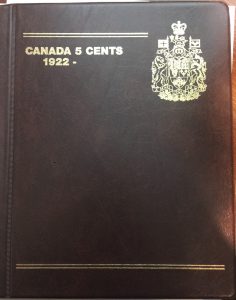
-
Gardmaster Canada 5-Cents Album
-

-
A page from my Gardmaster Canada 5-Cents Album
-

-
Gardmaster Canada Dollar Album
-
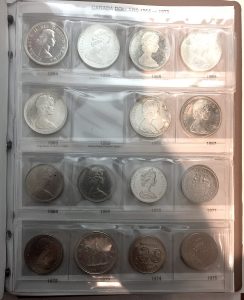
-
A page from my Gardmaster Canada Dollar Album
Just like for United States coins there are only a few options. After doing some research I settled on Gardmaster albums.
Gardmaster albums use clear pages that have a slider where the coins are placed. Pull out the slider and insert your coin or other numismatic collectibles in the pocket. Slide the slider back in and you have a clear page to see both sides and edge of the coin. The plastic they use does not contain a softening agent (like PVC) to keep your collectibles safe.
-
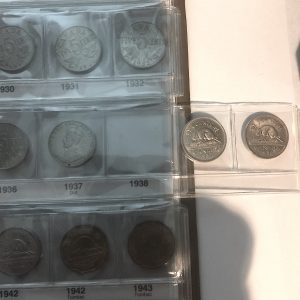
-
Slider slides out to place coins
-
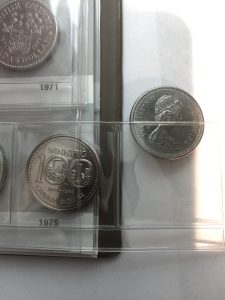
-
Coins are inserted from the top of the slider which holds the coins in place
The covers themselves use a snap closure to keep the pages in place. These covers are thick enough to hold 5 pages comfortably but can be pushed to six. The limiting factor will be the thickness of your collectibles. Adding too many pages will cause the cover to bulge making the presentation less attractive.
Between the pages is a page where information is either printed with the information about the collectible or can be purchased blank for you to add your own information. For my Large Cent collection, I used Brother P-Touch labels to mark the slots for each coin. I tried to make a template using Microsoft Word but was unsuccessful. A more experienced Word wrangler explained what I was doing wrong which will allow me to fix this when I get a chance.
-
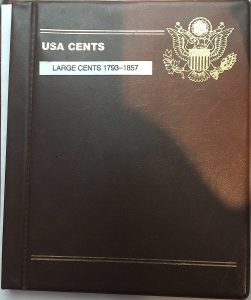
-
Gardmaster Generic USA Cents album I use for Large Cents
-
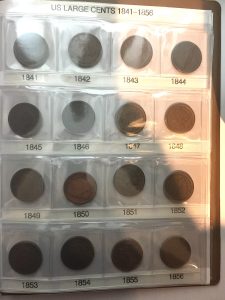
-
One of the pages of my Gardmaster USA Cents Album
Gardmaster, a Canadian company, makes albums for all series of Canadian coins including modern coins. Albums for Canadian coins have the Canadian crest printed on the cover along with the coin’s series.
Gardmaster also makes albums for United States coins that have a heraldic eagle on the cover. Albums are available for all United States series including State quarters, Presidential dollars, and albums with coin types on the cover but no dates printed on the inserts allowing the collector to make their own collection.
Blank covers are also available that include what they call a “World Crest.” I do not know what the World Crest looks like since I have not purchased one.
Gardmaster Pages
- 30 pocket page, fits up to 27mm coins
- 16 pocket page, fits up to 41mm coins
- 2 pocket page, fits proof or mint sets
- 3 pocket page, fits current or small currency
- 9 pocket page, fits up to 52mm coins
- 20 pocket page, fits up to 30mm coins
If you are making your own album, Gardmaster has six-page types to choose from. Most coins can fit into a 30-pocket page that has six pockets in a row and five rows. When I was creating my Large Cent album I thought that was a little tight. I bypassed the 20-pocket page (five pockets with four rows) for the 16-pocket page (four pockets in four rows).
The various page sizes can be mixed and matched depending on your needs.
Currently, I buy the Gardmaster Albums and pages from Brooklyn Gallery Coins and Stamps. When you search for the albums and pages, you need to search for “guardmaster” since they spelled it wrong. Who cares about the spelling—Brooklyn Gallery has great prices and they ship quickly.
Although Gardmaster albums are better looking than 2×2 pages in binders, they are not as good looking as the Dansco, Whitman, or the Littleton albums I have used. The binders remind me of the 1980s that is in dire need of an upgrade. The covers look like they are pressed around the cardboard in the center instead of cleanly wrapped like most covers we are used to using.
My next project is to organize my New York Collection. Currently, these are coins, tokens, and medals in 2×2 holders and flips with most put into the typical binder page. As I gather these items, I am going to figure how I will organize these pieces and buy the appropriate Gardmaster albums for them. When I do, I will fix the template so that I can print the divider page with the information I want using the inkjet printer on my desk.
Sep 10, 2017 | administrative, advice, commentary
Storms of all type are hitting the shores of the United States. Nearly two weeks after Harvey did his damage in southeast Texas, Irma is north of the Florida Keys and heading towards Naples as I type this.
And don’t get me started on the devastation that Equifax will bring to all of us!
While Irma is now attacking Florida, Hurricane Jose is hanging out about 300 miles northwest of the northern Leeward Islands. Some forecasts have Jose stalling out over the Atlantic Ocean. However, its movement shows is on a very slow track that if it keeps going will land on the shores of the Carolinas.
Forget the suggestion to keep your valuables in your dishwasher or washing machine. If the electricity flashes or surges, it could trigger the appliance to turn on. If the storm rips apart your house, your appliance can find itself miles away with your valuables still inside.
In the days to come, I will have information about protecting your collectibles in case of a disaster.
It is too late to plan now. Your primary concern should be to the lives of you and your family, relatives, friends, and neighbors. If you were told to evacuate, get the heck out! Material items can be repaired and replaced. Once you die there is no coming back.
For everyone else not in the path of the storms, please consider helping. If you cannot work in the affected area, you can donate money and blood. Money is more flexible than donating goods because it allows relief workers to buy what is necessary instead of warehousing surplus.
 Blood is needed to help the injured and sick during this time.
Blood is needed to help the injured and sick during this time.
Blood has a shelf-life of around four weeks. It constantly needs renewal. You can donate whole blood every 56 days!
To find a blood drive near you visit redcrossblood.org.
 The National Voluntary Organizations Active in Disaster (VOAD) works with credible agencies to help people during domestic disasters. You can donate to any of the members listed on their website at nvoad.org.
The National Voluntary Organizations Active in Disaster (VOAD) works with credible agencies to help people during domestic disasters. You can donate to any of the members listed on their website at nvoad.org.
Keep safe!
Jun 8, 2017 | advice, ancient, coins, news, video

Amateur photos of stolen coins — like this, taken from a cache of images held by a middleman — are sent from phone to phone in the underground trade.
A Wall Street Journal report said that Swiss authorities have been investigating Ali and Hicham Aboutaam, owners of the Phoenix Ancient Art Company with offices in New York and Geneva. It is alleged that items that they have been trading in artifacts looted by ISIS.
In one famous video, ISIS militants were shown destroying artifacts with the voice-over declaring, “These idols and pagans for people in the past centuries were worshiped instead of Allah. When Allah ordered to destroy and remove them, it was an easy matter. We don’t care, even if it costs billions of dollars.”
That may have been a ruse by only showing a few items destroyed since it is estimated that ISIS generates $100-250 million per year selling looted antiquities on the black market.
While art and statues are easy to trace, coins are a different story. Coins can be carried easily in pockets, wrapped in clothes, or just “innocently” thrown into luggage and smuggled anywhere in the world. Detection is difficult and without documentation, they may be difficult to trace.
Reports in the international media note that weak laws and the lure of significant profits have kept the sales of artifacts and looted coins moving through the system. Looted coins have been sold on sites like eBay and Etsy without fear of reprisals because their provenance cannot be proven.
Even though the 1970 UNESCO Convention was agreed upon to stop archaeological pillaging and trafficking of cultural property, the way it is implemented in most countries is to recover the item at its final destination and not in transit. An unsuspecting collector or dealer could be in the position of one of these looted coins but have to face the consequences if they are caught.
The sale of these coins supports ISIS and their terrorist activities. Even after the coins have changed hands several times, they could circulate through the industry and be used by dealers down the like who will continue to trade the coins and using the profits to help fund ISIS.
It would be easy to say to resist buying ancient Syrian or Persian coins, but there are coins that were not stolen and can be legitimately owned. This might be an area that the Ancient Coin Collectors Guild should weigh in on behalf their community.
Until then, try to limit your purchases to reputable dealers and dealers you know.
Wall Street Journal Video
May 11, 2017 | advice, cents, coins, counterfeit

1943 Lincoln cent struck on a copper planchet
(Courtesy of CoinTrackers)
Since the news reports about the discovery of two 1943 Lincoln wheat cents struck on copper planchets hit the news, I have received a few inquiries as to whether they have a coin that could be worth tens- or hundreds-of-thousands-of-dollars. All are disappointed when they find out that grandpa’s old album may not be worth more than $50.00 if that much.
“But the coin is so old!”
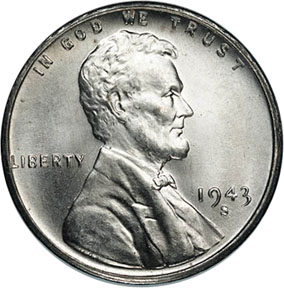
U.S. cents have been made of copper, steel, and copper plated zinc. What’s next?
The 1943 copper Lincoln cent is known as an off-metal error. It probably happened when the U.S. Mint started to strike the 1943 Steel cents and a few copper planchets were probably still stuck in the machine. According to Coin World, there have been 12 reported 1943 copper cents.
Now that the coin has been reported in the mainstream media, be careful about buying counterfeits coins. Sources report that would-be fraudsters are either taking the abundant supply of steel cents at a cost of 50-cents to $2 each and plating them with copper. This type of counterfeit is easy to detect using a magnet. Copper is not magnetic and will not react to a magnet.
Another trick they try is to alter the “8” on a 1948 Lincoln cent to make it look like a three. If you carefully study the style used on the “3” and the “8” you will see that they are very different shapes on the coins. Also, if you look at the date under magnification, you could see the tooling marks. This is where carrying a 10x loupe is beneficial.
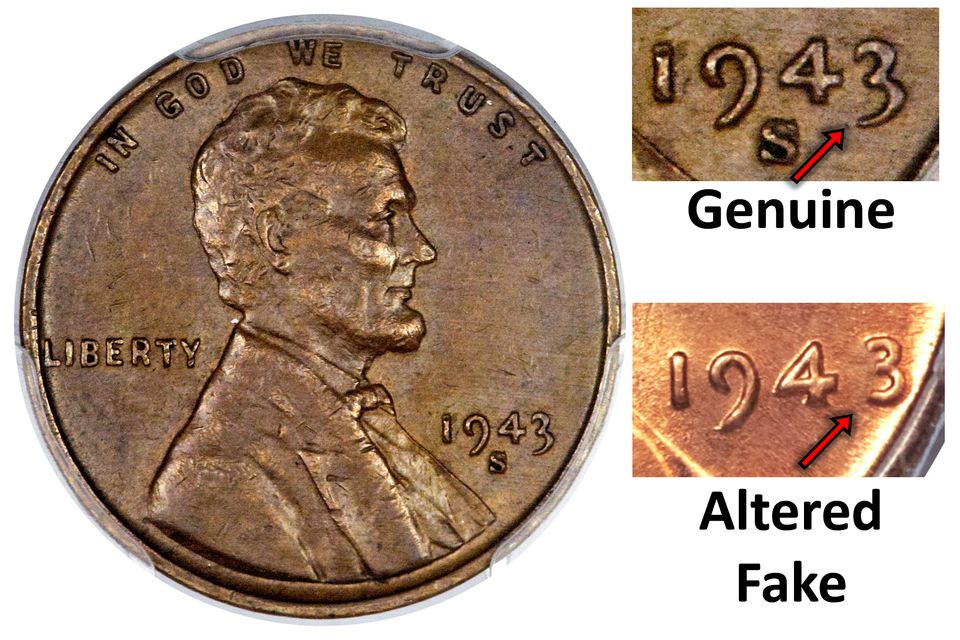
Identifying a 1943 altered date
Otherwise, make sure the coin is encapsulated by a reputable grading service and that you check the serial numbers against the grading service’s database.
While it is nice to have the attention, please do not be disappointed when I tell you that the rusting 1943 steel cent is probably worth about 25-cents or that reprocessed set may be worth one- or two-dollars.
Credits
- 1943 copper Lincoln Cent courtesy of CoinTrackers.
- 1943 Steel Cent courtesy of the U.S. Mint.
- Image showing the diagnostics of an altered 1943 date courtesy of The Spruce.
Mar 10, 2017 | advice, coins, currency

How would you like to find one of these at a flea market?
Estate Sales and Auctions
In my current business, I am able to buy inventory from estate sales and estate auctions. Most estate sales are either the lifetime accumulation of a deceased loved one or a forced sell-off of assets mainly as part of a court-ordered restructuring. An estate sale company will come into a home, stage it for a sale, add prices to everything and open the house for the public to buy what they want.
Adding prices mean tagging the items with a price that the company running the estate sale thinks is a fair price for the item. This tagging also has these sales also called Tag Sales. When it comes to tagging, some companies are better than others. After they pick the better items, the rest of the house is tagged either at prices too low or prices too high because most of the estate sales company do not know about the items they sell. They might use an average price of similar items they sold in the past or they just pull prices out of the air.
Estate sale companies have little to know expertise with coins and currency which is reflected in their prices. I cannot tell you how many times that I have walked into an estate sale and seen common date Morgan and Peace dollars priced at over market value.
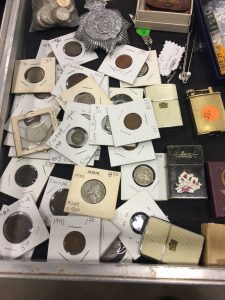
Case of foreign coins at a flea market
When I presented my offer, I told him that I understood the coin market and would explain how I came up with the price. I showed him the Numismedia Fair Market Value pricing guide and explaining that it is a retail price guide. Confused by the differences in grade pricing he questioned how to grade coins, I show him the condition of the coins compared to the images in the PCGS Photograde app. After being confused by everything he said that he would take a chance on his price and turned down my offer.
I returned to the estate sale on Sunday afternoon about a half-hour before closing and noticed that none of the coins sold. I lowered my offer to a small percentage above its melt value. The offer was declined. A week later I found out that the coins were brought to a local coin shop. Imagine their surprise when they were offered a price between my two prices.
If you go estate sale shopping for coins, be prepared to be patient. Even though it is not their merchandise, they act as if it is their personal property. Most will be reasonable if you are reasonable with them. I would recommend reviewing the “Negotiating” section in my post “How Are Coins Priced (Part II).”
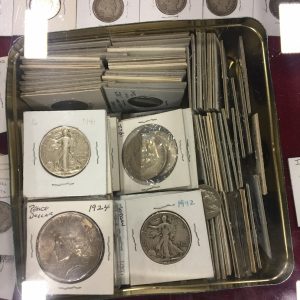
Silver halves and Peace dollars found at a recent flea market
In my experience, gold and U.S. Mint packaged items usually sell at prices greater than fair market value. I cannot tell you why a 1977 Proof Set would sell for $15 when it is valued at $8, but it happens at these auctions.
If you are not involved in this market, there is a world of online estate auctions that hides in the open. Online estate auctions are hosted on sites that are not quite well known outside of those of us who work and shop in this world. These auctions are simply a company imaging and posting the inventory online, managing the auction, collecting money, and making sure everyone is paid. Most companies will hold absolute auctions that run for 7-10 days with all items starting at $1.00.
For those who do not know, an absolute auction is one where the lots sell at whatever the price is when bidding ends, also known as the hammer price in reference to a hammer that is used during live auctions. Winners will also pay a buyer’s fee which average 15-percent of the hammer price.
Although it is possible to find bargains in these estate auctions, many times I have seen numismatic items sell for more than fair market value. This is not good if you are a re-seller but sellers are doing well.
Antique Shows and Flea Markets
I go to a lot of antique shows and flea markets. I will set up a table at a few flea markets in a month and do a big show at least every month. One big I regularly participate is D.C. Big Flea, the mid-Atlantic’s largest antiques show and flea market. The show attracts 400-700 vendors, depending if they can use the entire center, with a variety of antique, vintage, and collectible items.
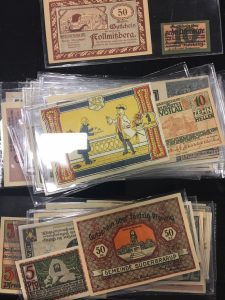
German Notgeld found at a flea market
Buying numismatic items at these large shows can be problematic. One of the biggest problems is that the vendor might have bought the item at full price and has overpriced it to gain a profit. There was also the time that a vendor had bought a roll of American Silver Eagles, placed them into AirTite holders and was selling them at a premium similar to the collectible Eagles struck at West Point with the “W” mintmark. When I questioned his prices and showed him that he was charging a 100-percent markup based on the per-roll price at a known distributor, he bluntly told me how unhappy he was with my questioning.
Most dealers will not try to swindle you based on a false narrative of value. In fact, many appreciate the education including the pointer to online resources. They will negotiate, and if you are fair with them, they will be fair with you. Sometimes, you can find items that you might not see on a bourse floor. During the last show I attended, one dealer had a case with a lot of German Notgeld, most in Extra Fine and Uncirculated condition.
During a previous show, I found a dealer who emptied boxes of tokens, trinkets, buttons, and medals on a large table. It was a treasure hunter’s dream! Although I did not have time to do an extensive search, I did find a few small New York-related items that I had never seen before including a merchant token for a business I know existed into the 1970s.
Although estates sales and auctions, antiques shows, and flea markets could present problems because most of the dealers are not as knowledgeable, if you come armed with knowledge, patience, and be on your best behavior, you can find some good bargains.
Nov 25, 2016 | advice, fun, gold
As the weather turns colder and the fowl shudder for other reasons, we turn our thoughts to what to give as gifts. As numismatists, we can always find something based on the hobby that would be nice and maybe spark interest in collecting. Or we can find something fun that is somewhat related for those we know will never be converted.
We begin the weekend that starts with Black Friday and extends to Cyber Monday, terms that have little meaning these days except as marketing mechanism, if we are not going to fight the crowds at least we can plan.
My planning began two weeks ago when I wanted to do something different for my coin club’s December meeting. As the club greeter, I set up a table at the door to give away tickets for door prizes and sell raffle tickets. Door prizes are usually low-value foreign coins or an unusual U.S. coin, such as one with a minor error. Since I am responsible for selecting the door prizes, I try to follow a theme and include at least one coin containing silver. The raffle is usually a small gold coin or a silver crown-like coin, depending on what the club treasurer can find.
Our December meetings are special in that it is our annual charity auction. Members donate items to the auction and everyone in attendance bids for what they want. All proceeds are donated to a local charity. This has been a club tradition dating back to its founding in 1959.
While thinking about the door prizes and raffle, I was scanning online auctions looking for ideas. One idea came when I stumbled across currency-like notes with holiday themes. When I found a $1 million note with “A Blue Christmas with Elvis” I knew I found a door prize. Since I was buying two for the coin club, I bought a few more to include in greeting cards that I will be mailing this year.
To be inclusive, the next search was to look for Chanukah currency. Although the selection was not as varied as the Christmas notes, I found one that looked nice and was going to satisfy the coin club and be added to my holiday cards.
Then my thoughts turned to the raffle. We try to raffle gold coins whenever we can buy them at a cheap enough price. However, with the price of gold over $1,200 per troy ounce and over $189 higher than it opened in January, finding something affordable was not easy. As I was searching I found a listing for 1-grain bars mounted on holiday-related cards. I know that 1 grain is not a lot of gold. In fact, it comes out to about $2.50 in gold. But to buy four at $5 per card to donate for the raffle where the proceeds go to charity, that would be something different.
After purchasing the four cards, I started searching for other gold bars and found everything from one-third of a gram and heavier. Even with the current price of gold, finding special bars that could be purchased for $25 or less gave me an idea to buy a few to include in cards to special people.
Of course, this type of gift giving is not for everyone. But if you want to do something with a numismatic theme and make it look special for not a lot of money, think about buying these light gold bars. I think you will impress your gift recipient.
Oct 22, 2016 | advice, ANA, commentary, education, errors, exonumia
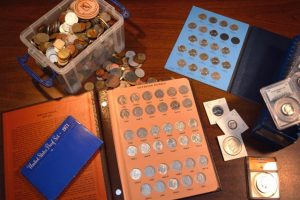 Although I owe you my impressions of the U.S. Mint’s Numismatic Forum, giving it the proper treatment I think it deserves has taken longer than expected. Rather, let me jump ahead to a recurring theme that takes over the conversation on the state of the hobby: Numismatics is a dying hobby of the old.
Although I owe you my impressions of the U.S. Mint’s Numismatic Forum, giving it the proper treatment I think it deserves has taken longer than expected. Rather, let me jump ahead to a recurring theme that takes over the conversation on the state of the hobby: Numismatics is a dying hobby of the old.
MYTH: Electronic transactions have taken over and hard currency is being used less.
FACT: Electronic transactions make up only 13-percent of retail purchases in the United States and 7.1-percent worldwide. Although the pundits like to point out that trillions of dollars change hands electronically, this includes non-consumer-related transactions such as bank transfers from one account to the other using the Automated Clearing House (ACH). If your paycheck is deposited directly into your account, it is transferred using the ACH system.
In real money, the International Monetary Fund estimates that the U.S. Gross Domestic Product (GDP), the total costs for all goods and services, to be $18,561,934,000,000 ($18.561 trillion). If 13-percent of that is electronic retail purchases, that means that $2,413,051,420,000 ($2.413 trillion) is made not using cash. What about the other $16.1 trillion dollars?
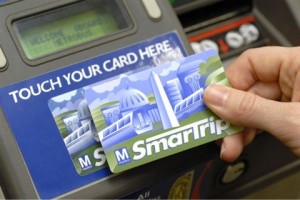 Depending on which report you read, electronic transactions should grow at a rate of 8-10 percent annually. Even if the U.S. GDP is on a pace to grow by only 1.4-percent, adding about $250 billion in electronic transactions will not make a significant dent in the rate of electronic transactions.
Depending on which report you read, electronic transactions should grow at a rate of 8-10 percent annually. Even if the U.S. GDP is on a pace to grow by only 1.4-percent, adding about $250 billion in electronic transactions will not make a significant dent in the rate of electronic transactions.
Of course, the U.S. are not spending $16 trillion in cash transactions, but both the U.S. Mint and the Bureau of Engraving and Printing are on course for record production years. Year-to-date, the U.S. Mint has produced $870,133,500 in circulating coins (not including half-dollar, dollar, and commemorative coins). For Fiscal Year 2015 (October 2014-September 2015) the BEP produced $166,302,000,000 ($166.302 trillion) in currency (not including $2 notes). Although some of the currency does replace worn notes (the BEP reports that 90-percent of $1 notes replace damaged notes) and a significant portion of the $100 notes are shipped to banks overseas, which represents quite a number of transactions.
Although electronic payment options make up 13-percent of all cashless transactions you have to remember that this market barely existed a few years ago. Even as banks and large retailers push to increase the number cashless transaction, there are problems that society faces when moving to a cashless retail system. The biggest problem is one of scale. The United States makes more money, spends more money, trades more money, and has more economic impact than any other country in the world. It is the world’s single largest economy with a strong capitalistic culture where most of the commerce is done with small businesses. Amongst all business, 55-percent of retail merchants are cash-only enterprises. They are too small to consider paying the 3-to-5 percent fees for using a credit card, known as the “swipe fee.” Of those that do take credit cards, at least 36-percent require a minimum purchase.
MYTH: The sharing economy is turning the economic world upside down changing the way we will pay for goods and services.
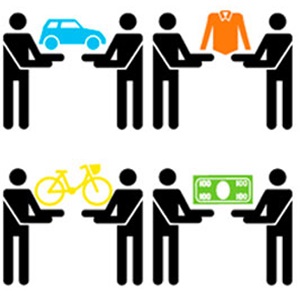 FACT: Human beings have been sharing and trading goods and services from the dawn of time. You killed an ox and have the hide left over. I have a lot of fruit I picked that I cannot eat. I will give you an amount of fruit and you give me the hide. Money was created as a medium of exchange when I did not want your fruit but wanted some of the goods someone else had. It was the pre-historic version of the three-way trade.
FACT: Human beings have been sharing and trading goods and services from the dawn of time. You killed an ox and have the hide left over. I have a lot of fruit I picked that I cannot eat. I will give you an amount of fruit and you give me the hide. Money was created as a medium of exchange when I did not want your fruit but wanted some of the goods someone else had. It was the pre-historic version of the three-way trade.
Some of us grew up trading. I remember trading a Mickey Mantle baseball card for a Jerry Koosman and two Donn Clendenon cards —one from Houston and the other from Montreal, just after the Mets traded for Clendenon. I thought I gave the kid a deal because 1969 turned out to be Mantle ’s last year.
What has changed since I made the trade? There has been a tremendous change in technology. While we set the price for the baseball cards we traded, now there are price guides, electronic markets, auctions, and online trading sites. Even in other categories, you might place a classified ad in a newspaper or an advertising rag like PennySaver or something like Uncle Henry’s in Maine. Now there are sites like Craigslist, AirBnB, Uber and Lyft that expands the market.
Pundits like to point to the sharing economy’s growth. The problem with the reports is that this version of the sharing economy has gone from nothing to something with a lot of press coverage. Anytime there is something shiny and new it grabs the attention of the public before they move on to the next distraction.
We share numismatics all of the time. We go to shows and display our collections for competitions. We enter registry sets to try to create a nice collection or even worst collection with the advent of “low ball” sets of coins of very low grades. We blog and read about other’s collections. We post finds to public forums and sometimes bring our collections to show off at club meetings.
Sometimes we even trade. Have you traded a few Barber dimes for a Barber half because you needed the half for your collection? How about three Morgan dollars for an elusive 1921-S Walking Liberty half-dollar?
The only difference between this and the new sharing economy is the lack of computer interface. Sometimes that human interaction is more fun than hiding behind a screen.
MYTH: People, especially millennials are not interested in collecting anything.
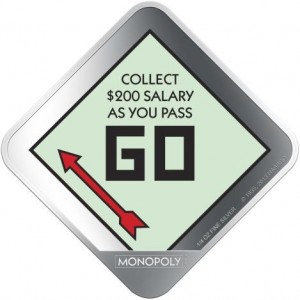
New Zealand Mint produces Monopoly coins for the Island nation of Niue. Did you pass Go?
One of the fastest growing sectors of this market is board games. While some games do incorporate electronics into their play, this new generation of gamers is finding that social gaming can be as much fun as their online endeavors.
Numismatics has never been a welcoming hobby for the mid-to-lower level collector. Dealers who are older may have a difficult time relating to younger and, frankly, a non-white demographic (see my post about one such incident here). It has created a culture of cranky older Caucasian collectors who think that their way is the only way to collect.
It is not just the dealers. Mainstream publishers put a lot of effort into creating references and collecting supplies that satisfy the market as being pushed by the dealers. Even worse, while the American Numismatic Association does recognize other aspects of numismatics, the fact that most of the Board of Governors are in the coin business with years of experiences in the coin business, that becomes the focus of the ANA.
It is time for the industry and its representative organization, the ANA, to remember that numismatics is more than coins. Currency, exonumia, scripophily, and even military medals are all part of numismatics. Concentrating on coins, especially coverage of high-value sales scares off many novices who may be willing to look at coins as a hobby. When I go out to schools in the Washington, D.C. metro area, I will bring enough Metro (the local transit system) tokens for everyone in the class. After buying a bulk bag of tokens, I have plenty to give away along with the story of how they were once used. But it allows me to show the students that numismatics is more than coins. I explain how I sit at junk boxes and at the tables of token dealers to find items from my hometown of New York. When I show them four pages of 2x2s with tokens and medals from New York and say that in three years I may have spent as much as $200, they seem to understand that you can have fun without spending a lot of money.
MYTH: We lost those who collected the state quarters forever.
 FACT: We also retained a lot of those collectors. Unfortunately, we damaged many others.
FACT: We also retained a lot of those collectors. Unfortunately, we damaged many others.
What made the state quarter program popular was that the way it was administered made everyone a stakeholder. Rather than dictating the design, states were encouraged to allow public participation to help decide on their quarter’s design. Contests and state pride went into the quarters that allowed each state to celebrate their home state. Ordinary people were brought into the process and ceremonies held in each state announcing the designs and on the release of the quarters.
Of course, the state quarters were also the hobby’s demise as television hucksters sold overpriced junk surrounding the sets. Colored coins and “special” sets were sold at high prices with the hint that they would only increase in value. When these people tried to cash in on their “investment” they found they overpaid, became angry, and may not come back. During this time, the ANA was nearly non-existent in the education process as it was undergoing its own internal political battles. Without someone to help stand up for the hobby to help educate the public, the industry suffered.
Although the ANA has improved in many areas, it continues to be about coins with a slant toward classic (pre-1965) and rare coins. The only modern coins that seem to get any amount of respect from the community are commemoratives, bullion, and errors. With the so-called modern era being 52 years old, it is time for the old and crusty of the numismatics industry to either get on board with that it is new to the new collectors or maybe it is time to consider retirement.
The lesson I have learned in numismatics as well in my business of buying and selling collectibles is that in order to expand any hobby it has to be made into something personal. Sports collectibles sell memories of your heroes. Space collectibles sell the mystique of outer space. Automobilia seems to have a fascination for a lot of people even as what was considered modern nameplates like Plymouth and Pontiac have gone the way of DeSoto and American Motors.
Hobbies have to also be interesting. Is it really interesting to collect a series of all of the same coins where the only difference is the date or mintmark? Again, why does a collection have to be biased for coins? Can someone have fun collecting So-called dollars, transportation tokens, or even unusual coins? I think about how much fun Charmy Harker might have had to put together her award-winning exhibit Penny Potpourri with things made out of pennies. If you have not seen her exhibit, you can find images here. It has to be one of the best exhibits I have ever seen because it is unusual. I like things that are different.
In order to get people interested in the hobby, you cannot introduce it to them by showing a 1909-S VDB Lincoln cent or a 1937-D 3-Legged Buffalo nickel as an example. Not only are these coins difficult to find and less affordable, but not everyone may be interested. I like to use my two-pages of 2×2 holders with a set of transportation tokens with every letter of the alphabet cut out of the center, except “Q” and “Z,” along with some that have shapes. When I tell someone I paid around $50 for the initial investment and can buy most tokens for less than $5 each, they want to know how they could get started.
Here are some ideas to help you start a new collection. You can only use these if you do so by recruiting a friend or relative who is not currently part of the hobby:
- If you want to start with coins, go find a folder of currently circulating coins and see who can fill their folder first only from pocket change. I recommend either Lincoln Memorial cents, which can be interesting finding S-mint circulating cents on the east coast, or Jefferson nickels (for fun, use Whitman Jefferson Nickel folder #2).
- Another idea for collecting coins is to make a collection based on a theme. Ideas for themes can be the year you were born, coins with an animal like buffalos, or create a type set that represents some of the subtle changes in a long series like Lincoln cents.
- There are more to exonumia than transportation tokens. If your state issued tax tokens in the early part of the 20th century then how about finding examples for a collection. Tokens are still being created for gaming, casino chips, parking tokens, or store tokens the pre-cursor to paper coupons. Advertising tokens can be a fun way to collect your hometown. Tokens with themes, shapes, and cutouts can be a lot of fun.
- Go beyond tokens to encased coins. Encased coins have been used as a private commemorative, advertising, and I even found one for an electric supply company that promised money off if you returned it to their store.
- You can collect elongated cents, also called squished pennies, from almost anywhere. Recently, I found a machine in the Philadelphia Mint’s gift shop. For 51-cents, each I was able to buy two souvenirs. Collecting elongateds also helps you keep the record of where you have been.
And I didn’t mention currency or scripophily. One cool idea would be to collect stock certificates representing what you might find on a Monopoly game board.
If you have other suggestions, send it as a comment!
Now go out and start a collection. Recruit a friend and do it together.
Selection of my New York collection
-
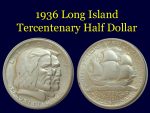
-
1936 Long Island Tercentenary Half-Dollar
-

-
1983 Brooklyn Bridge Centennial Medal issued by Brooklyn Union Gas
-

-
Medal from the opening of the Brooklyn Bridge in 1883
-

-
1956-D Encased Cent from the Chase Money Museum
-

-
A check from the First National Bank of Inwood (NY)
-
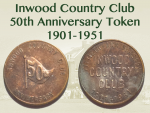
-
50th Anniversary medal from the Inwood Country Club.
-
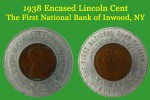
-
1938 Encased Cent from the First National Bank of Inwood (NY)
-

-
1984 LIRR Sesquicentennial Bronze Medal
-

-
TBTA Toll Token
-

-
Reverse of the Triborough Bridge and Tunnel Authority Rockaways resident token.
-
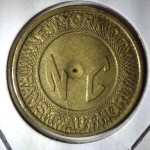
-
New York City Type 2 Subway Token error. It’s missing the punched out “Y”
-

-
2000-P New York quarter with Daniel Carr’s autograph on ICG label
-
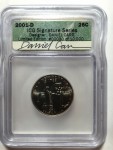
-
2000-D New York quarter with Daniel Carr’s autograph on ICG label
-
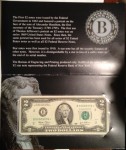
-
Series 2003 $2 Star Note from the Federal Reserve Bank of New York. Rosario Marin/John Snow signatures.
-

-
Series 2013 Uncirculated $1 Federal Reserve Note from the Federal Reserve Bank of New York
-

-
A&S Charge Token with account number
 Collecting can be an expensive hobby regardless of what is collected. Whether it is numismatics or comic books, one piece is never enough and there is always a desire to collect an entire set regardless of the parts that make up the set.
Collecting can be an expensive hobby regardless of what is collected. Whether it is numismatics or comic books, one piece is never enough and there is always a desire to collect an entire set regardless of the parts that make up the set.
 → Read more at
→ Read more at  The news article that caught my eye this week is
The news article that caught my eye this week is 


















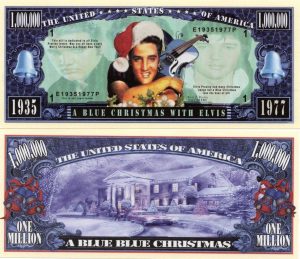

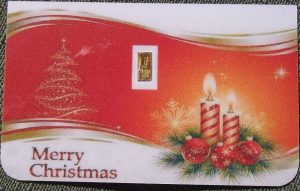

 Depending on which report you read,
Depending on which report you read, 


















